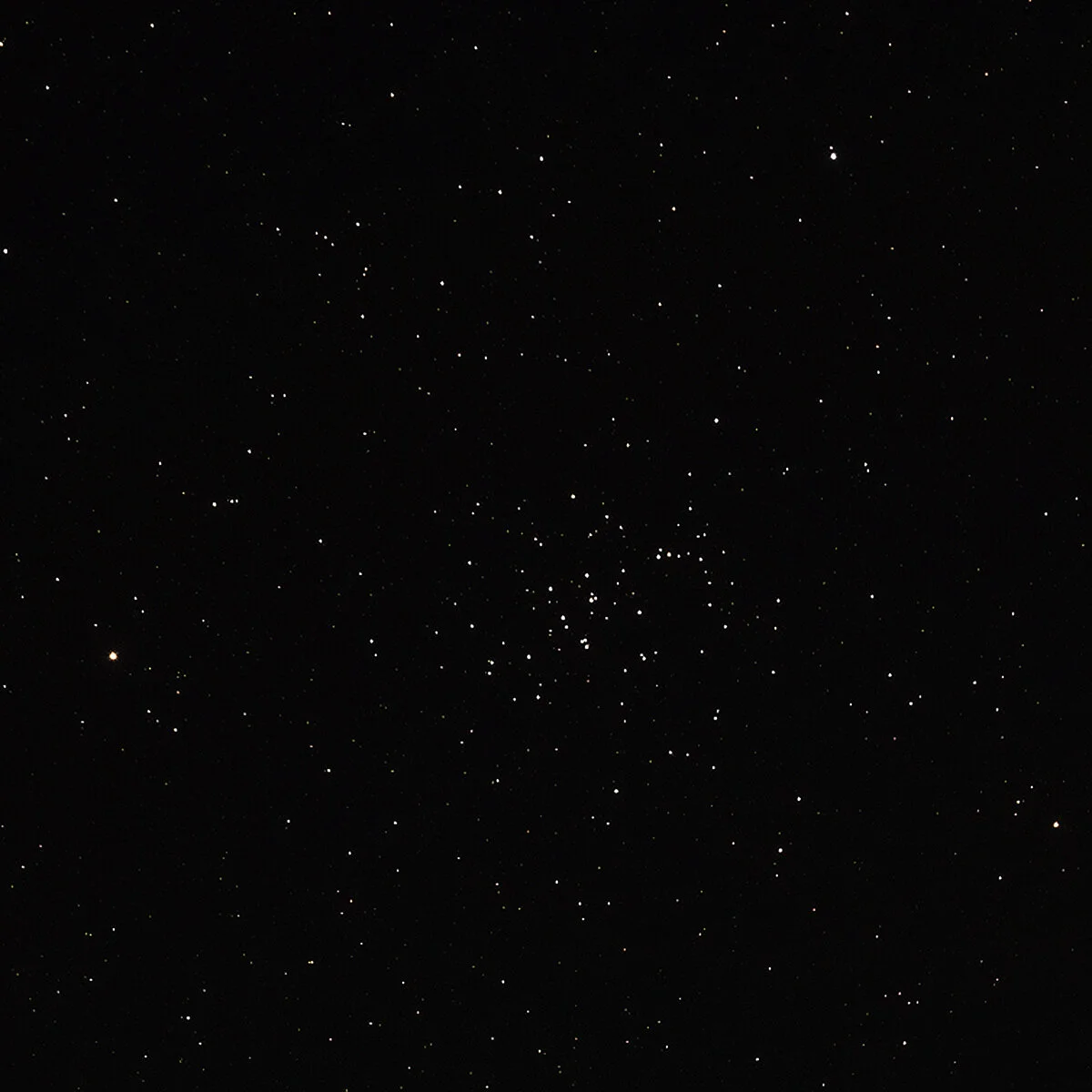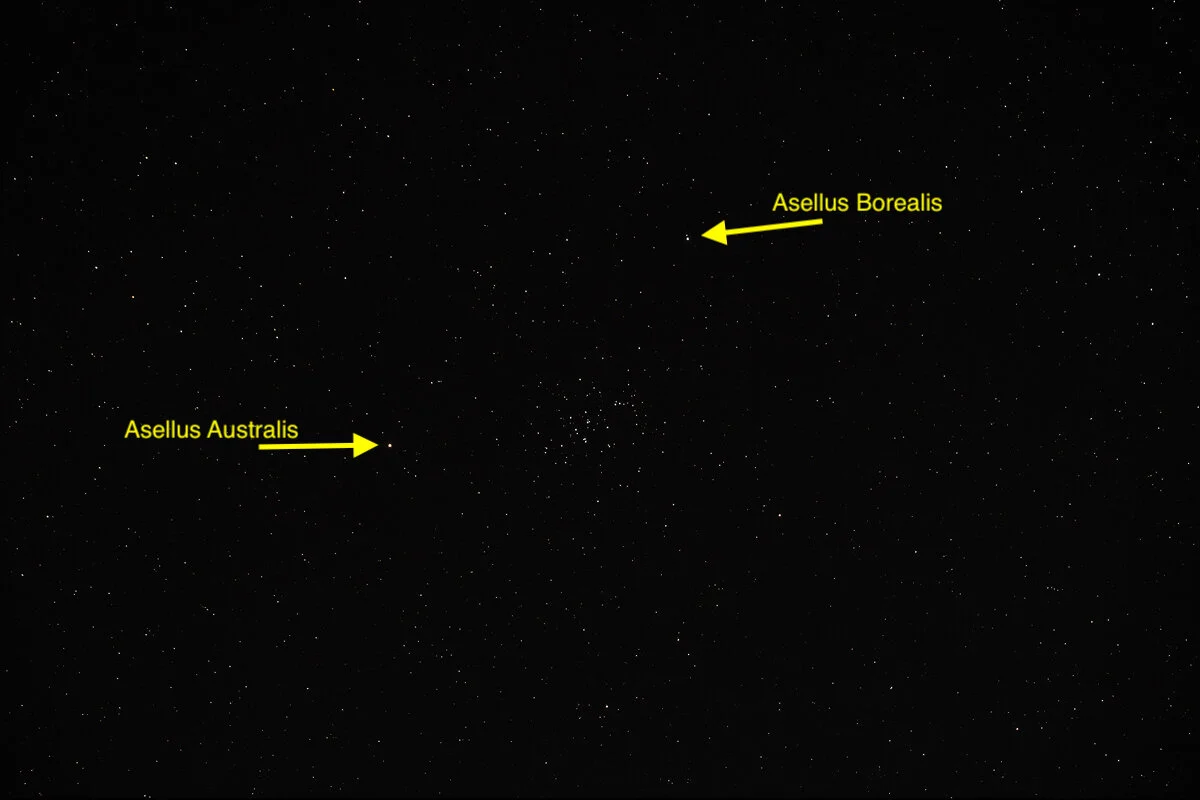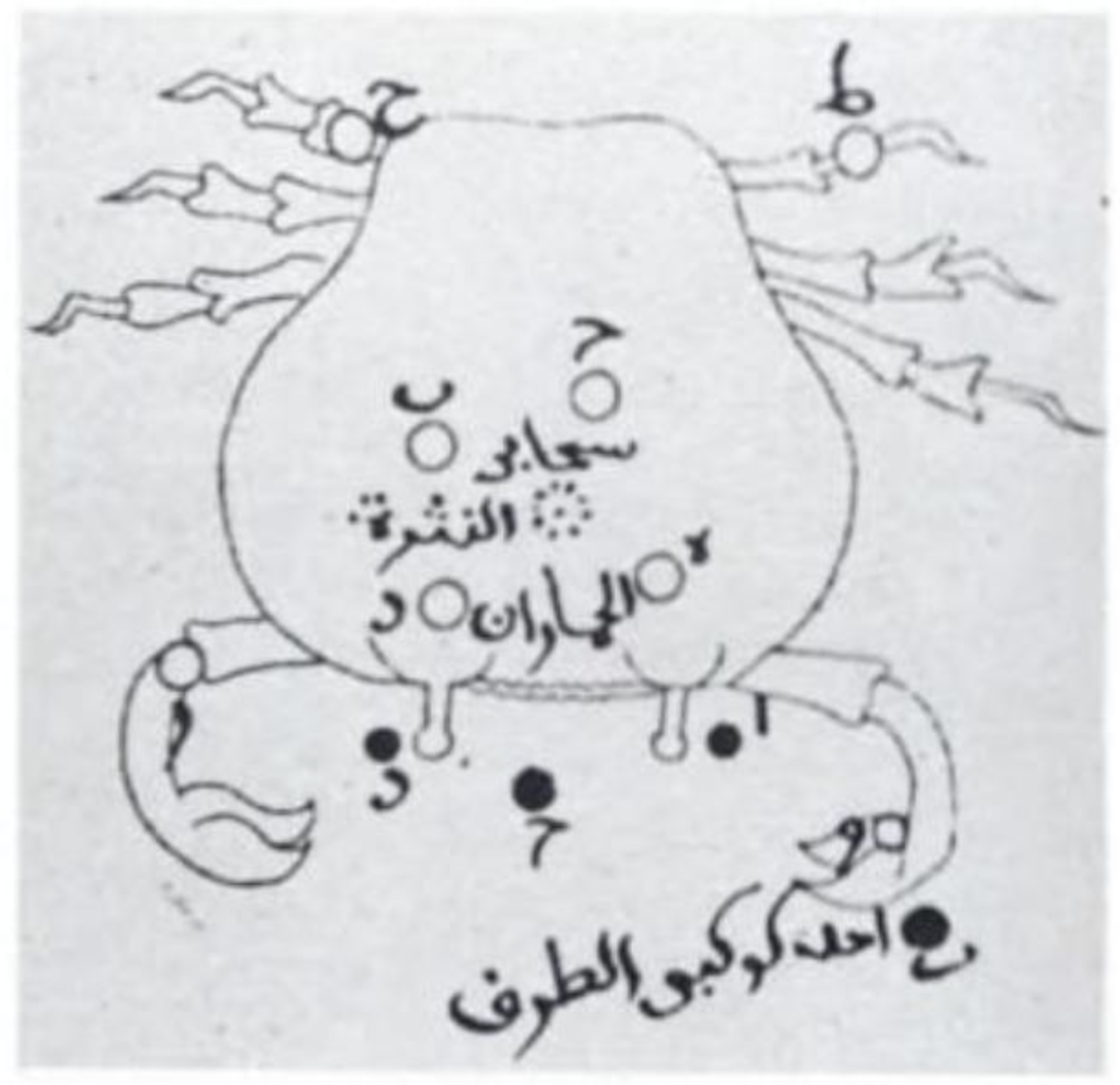M44 - Beehive Cluster
Type: Open Cluster
Discoverer: ?? As early as 260 BC by Aratus a Greek Astronomer. Galileo 1609.
Size: 15 ly
Distance: 610 ly
Constellation: Cancer
My Notes: (Mar 20, 2021) As you’ll read below, this is apparently a very well known cluster of stars. I however, had a very hard time finding it the 2 nights I looked for it in the past month on very clear skies. It is both indistinct and faint to my naked eye which seems contrary to the familiarity ancients had with it. It is written about so long ago and with such general familiarity that I find it almost incredulous that light pollution in today’s sky is enough to create this stark of a difference in visibility and general knowledge. Perhaps they just talked about it frequently in the same way that we teach children from an early age about the big dipper and Orion and so they all knew what to look for.
Once I learned what the constellation cancer looked like, I was able to quickly discern where this cluster was because it is right in the middle of the crab. It doesn’t make for a very interesting photograph. I had to do very little editing aside from prevent too many background stars from showing which would make it nearly impossible to discern.
It is a very large object in the sky. I had to remove my 1.4x teleconverter from my 100-400mm lens in order to fit it completely in frame.
Along with M42 and M45, M44 is a bit odd that Messier added it to his list. The speculation is that he added these 3 easily observable objects to polish off his initial publication at a nice round 45 objects.
Stats: Temp was 40℉. Humidity 59%. Captured from 00:39 to 01:06. Fujifilm XT4, 100-400mm f4.5-5.6 lens, same flimsy tripod and ball head, dew shield, etc as usual.
Ancient History: M44 is also known as Praesepe which was the latin word for crib or manger. This refers to the crib (feeding trough) of the 2 donkeys which are represented by the 2 bright stars flanking the cluster, Asellus Borealis and Asellus Australis. In Greek Mythology these 2 donkeys belonged to the gods Dionysus and Silenus who rode on them to go and battle the giants. The animals ended up frightening the giants and against all odds allowed the gods to win.
The word Nebula also comes from M44. In 260 BC Aratus characterized this patch of light as a small nebula. In 130 BC Hipparcos referred to it as the small cloud. Nebulosa came to generally mean M44. Later astronomers, Messier included, used this word to describe many of the things they saw in their telescopes.
M44 is so common that many astronomers wrote it off with only a passing note about its existence: ‘counted 38 stars’; ‘Praesepe, the well known cluster’; ‘The familiar cluster, Praesepe’
Galileo Notes: (1609) ‘The nebula called Praesepe contains not one star only but a mass of more than 40 small stars. We have noted 36 besides the Aselli.’ '[The Aselli (The Asses) are the 2 donkeys]
Messier Notes: (Mar 4th 1760) ‘A cluster of stars known by the name of the nebula of Cancer. The position given is that of star c.’
19 frames at 60sec Mean Algorithm in SSS iso1000 f5 103mm (154FF equiv.)
The 2 Donkeys from Mythology
An ancient Persian Manuscript showing m44 as the dotted circle



